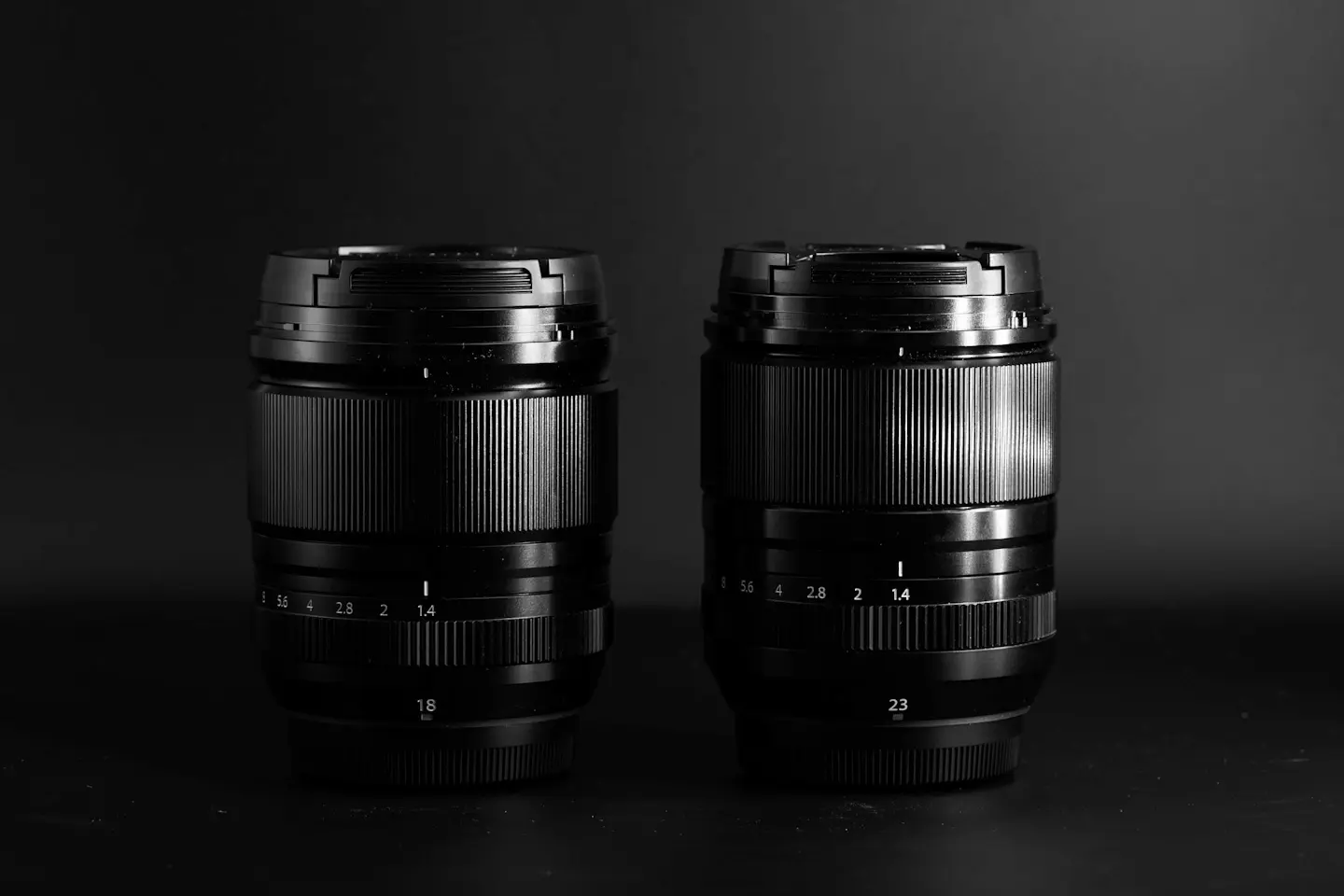It’s no coincidence that the three most popular fixed-lens cameras — the Fujifilm X100VI, Ricoh GR III, and Leica Q3 — all use approximately, either the 28 mm or 35 mm equivalent focal lengths. These two angles of view have long been favourites for street, travel, and everyday photography. They let you include more of the scene than our eyes naturally take in, yet stop short of the distortions that come with truly wide lenses.
The Fujifilm XF 23 mm f/1.4 WR has long been one of my go-to lenses — it’s the focal length I’ve traditionally chosen for general-purpose shooting, and it’s the same perspective built into Fuji’s X100 series. (You can read my full Fujifilm XF 23 mm f/1.4 WR review for more detail.) But as I’ve spent more time with the XF 18 mm f/1.4 WR, I’ve come to really appreciate it and the kinds of photographs it makes possible — it’s changed how I approach certain scenes (I’ve also written a dedicated XF 18 mm f/1.4 WR review if you’d like to dive deeper).
TL;DR — XF 18mm f/1.4 WR vs XF 23mm f/1.4 WR
- Field of view: 18 mm (27 mm-eq) is wider and more dynamic; 23 mm (35 mm-eq) feels natural and balanced.
- Depth of field: 23 mm gives slightly shallower blur at the same distance; 18 mm can match it if you move in close.
- Shooting style: 18 mm rewards getting closer and creating deep, immersive scenes; 23 mm is easier and more versatile.
- Build & AF: Both are sharp, weather-sealed, fast-focusing, and nearly identical in size/handling.
- Recommendation: Choose 23 mm for general-purpose shooting. Pick 18 mm if you want a lens that pushes creativity and loves tight spaces. Owning both makes sense if budget allows.
So when you’re weighing the XF 18 mm f/1.4 WR against the 23 mm, the question isn’t whether either is “good enough” — both are excellent. The real decision is whether there are meaningful performance differences, or if it mostly comes down to understanding how each focal length will shape the images you create.
This article contains affiliate links. If you buy something through one of these links, I may earn a small commission at no extra cost to you. This helps keep the site running and lets me keep creating free content.

XF 18mm f/1.4 WR vs XF 23mm f/1.4 WR — Key Specs
| Spec | XF 18mm f/1.4 WR | XF 23mm f/1.4 WR |
|---|---|---|
| Focal length (35mm equiv.) | 27 mm | 35 mm |
| Maximum aperture | f/1.4 | f/1.4 |
| Minimum focus distance | 20 cm | 19 cm |
| Maximum magnification | 0.15× | 0.20× |
| Length | 75.6 mm | 77.8 mm |
| Weight | 370 g | 375 g |
| Filter size | 62 mm | 58 mm |
| Weather sealing | Yes | Yes |
Field of View & Perspective
The difference between the 18 mm and 23 mm perspectives isn’t immediately obvious at first. I mean — what’s 5 mm between friends? But once you start to shoot them regularly, you realise there are subtle but important changes in how you see and compose with each lens.
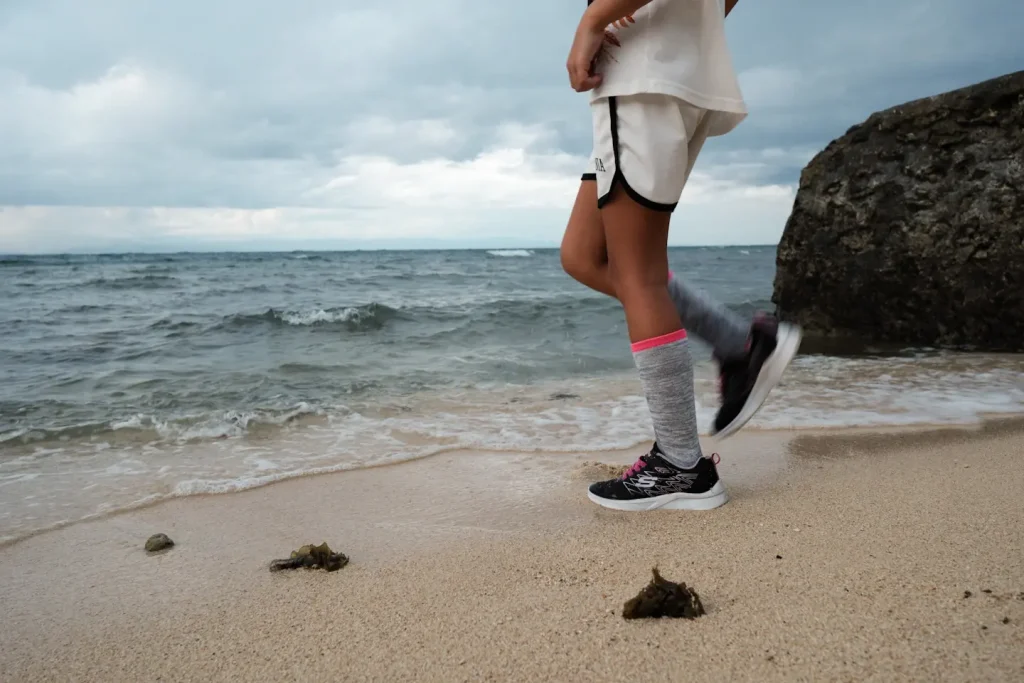

When I pick up the 23 mm f/1.4, I feel as if I can photograph almost anything. Its field of view is wide enough to build context and arrange elements in the frame, yet it adds just a hint of compression that pulls distant subjects a little closer. It can feel contextual but also intimate. It doesn’t force me to work in a particular way to get good images — probably a mix of the focal length itself and my own familiarity with it. Composing with the 23 mm feels natural and easy.
The 18 mm f/1.4 WR felt very similar at first — just a little wider, but not so wide that it seemed awkward. But once I reviewed the images, I realised I couldn’t shoot it quite the same way as the 23 mm. If I did, the photos often looked flat and lifeless. What quickly became clear is that the 18 mm rewards you for getting closer. As soon as I started pushing in, that 27 mm-equivalent field of view came alive: the frame seemed to open up, creating depth and pulling my eye into the scene. It took a few sessions to adjust, but once I did, the images became much more dynamic and immersive. The 23mm 1.4WR on the other hand, sometimes isn’t quite wide enough to shoot in this way.
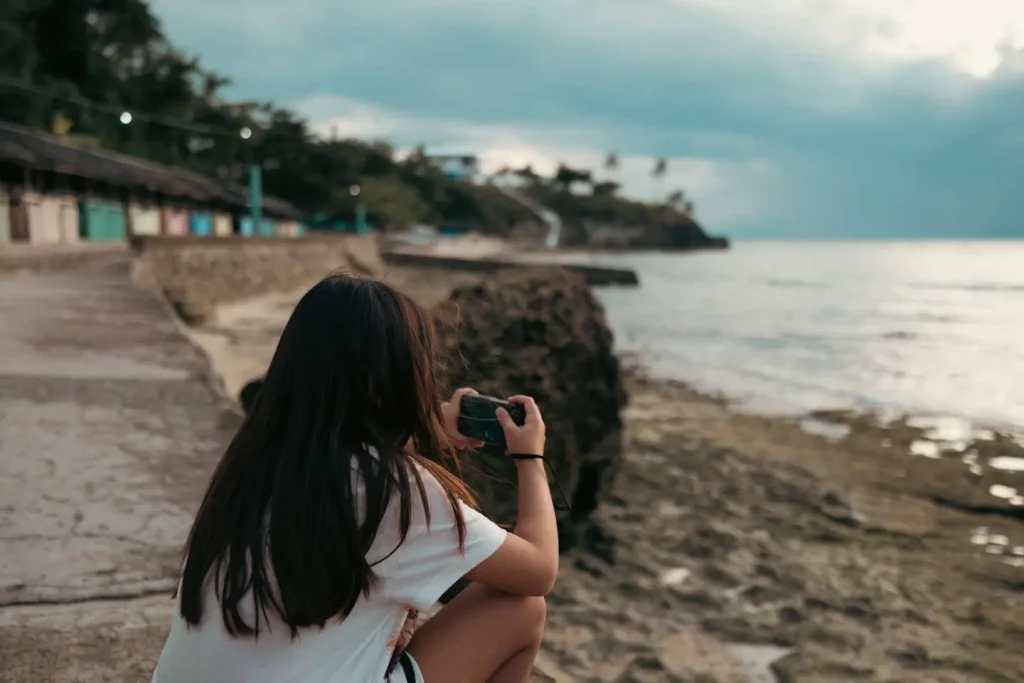
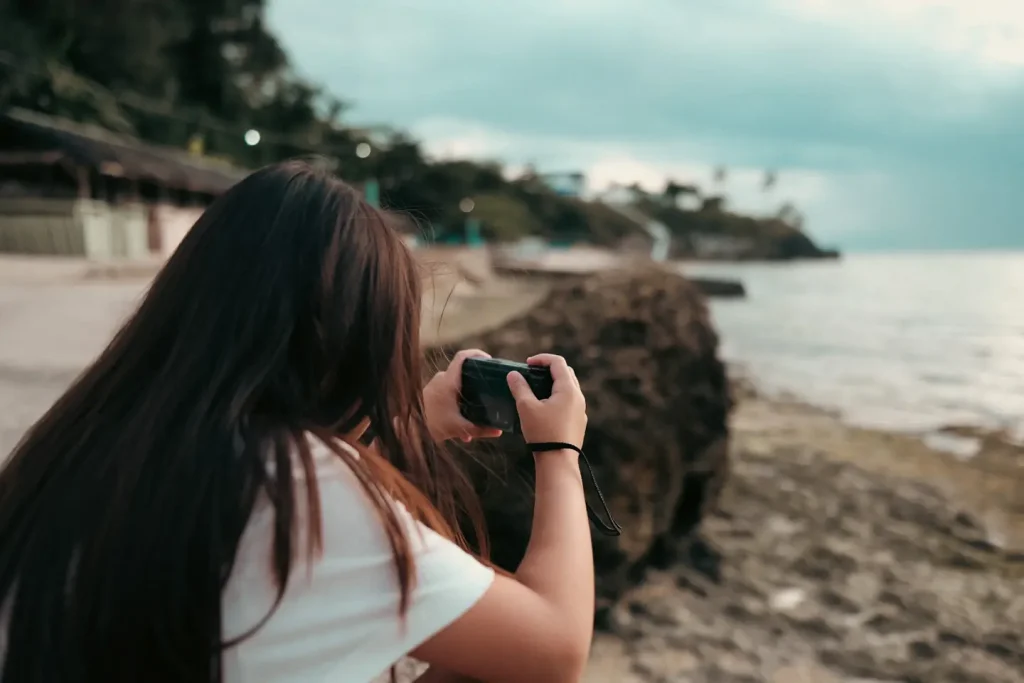
I, like many others, assumed the 23 mm would naturally give better bokeh and subject separation (if you want the best bokeh then see my Fuji 56mm 1.2WR review). And yes — if you stay at a comfortable distance, the 23 mm does offer a slightly shallower depth of field. But the way the 18 mm invites you closer means it can blur backgrounds and isolate subjects just as effectively. The difference is in how each lens wants to be used.
- The 18 mm begs you to move in and create dramatic, deep compositions, carefully placing elements from front to back for a sense of immersion.
- The 23 mm allows that too, but the effect is gentler and more balanced. It’s just as happy being shot from a little further back to create natural, people-first storytelling.

If you want an easy, general-purpose focal length — especially for including people in their environment — the 23 mm is the straightforward choice. For me, the 18 mm is about making striking photos that have immediate visual impact, while the 23 mm is about images that feel beautiful and natural, even if they don’t grab you quite as forcefully at first glance.
Check Prices
Fujifilm XF 18mm f/1.4 WR on Amazon
Fujifilm XF 23mm f/1.4 WR on Amazon
As an Amazon Associate I earn from qualifying purchases — it helps support this site at no extra cost to you.
Build, Handling & Optical Performance
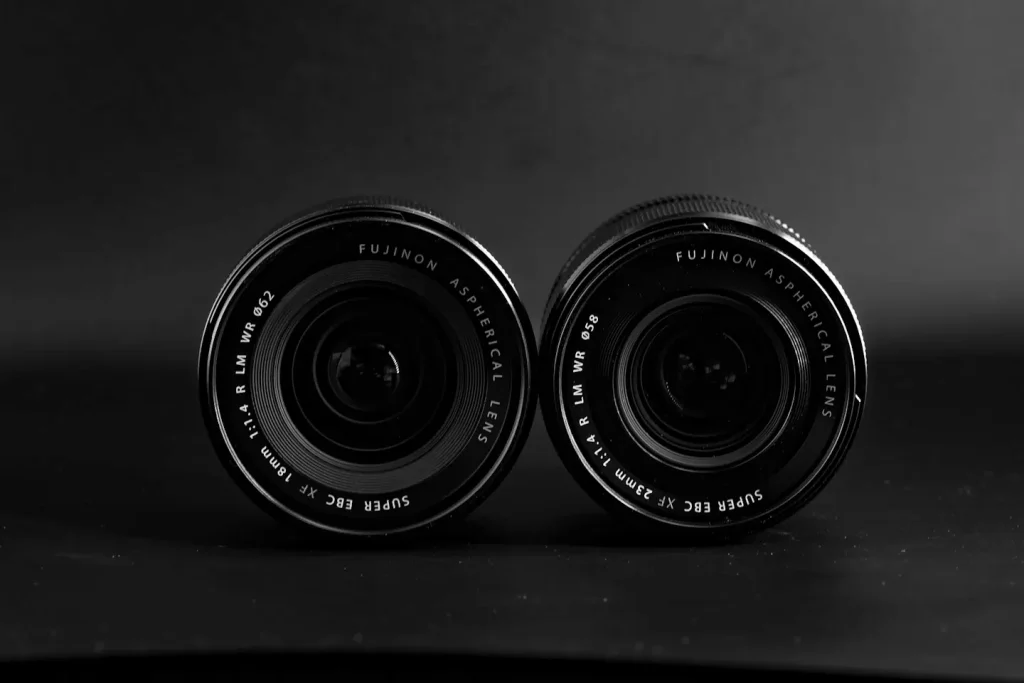
I use both lenses on my X-T5, and they feel virtually identical in size, weight, build quality, and handling. The 18mm has a slightly larger filter thread size at 62mm compared with 58mm on the 23mm lens. But In general, I really appreciate the consistency across Fuji’s latest f/1.4 primes — it means I can switch between them without having to adjust how the camera balances or feels.
As mentioned earlier, the aperture ring on the 18 mm f/1.4 WR is slightly looser and easier to turn compared with my other premium primes. Does it matter in real-world shooting? Not really — but the difference is there if you’re looking for it.
Both lenses use linear motors and are as fast as anything in the Fuji lineup. They’re quick and nearly silent on the X-T5, with neither showing a real advantage in everyday use or in more demanding situations. The 18 mm might have a very slight edge when tracking movement, but that’s mostly down to the deeper depth of field at the same aperture rather than any true AF speed difference.
Optically, both are pin-sharp, from the centre out to the edges, and both render beautifully with smooth focus falloff and creamy bokeh. The only flaw I’ve noticed is that the 18 mm can show a little green fringing in extreme contrast when shot wide open (think deep blacks transitioning straight to bright white highlights). It’s easily cleaned up in Lightroom, and I haven’t seen it on the 23 mm.

Because of the naturally wider field of view, the 18 mm requires a bit more attention to your shooting angle — get too close at the wrong angle and you’ll exaggerate perspective more than with the 23 mm. That’s a function of focal length rather than an optical flaw. In terms of technical distortion, both lenses are very well controlled.
Contrast from both is excellent, and colour rendering matches perfectly — a big plus if you own both and want your shots to cut together seamlessly. Neither suffers from noticeable vignetting wide open or obvious flare issues, thanks to Fuji’s coatings and the supplied hoods (which I always use).
Conclusion & Value
If I were advising a friend on a general-purpose prime, I’d lean toward the XF 23 mm f/1.4 WR. It’s simply more versatile, easier to shoot with, and still delivers that fantastic image quality Fuji’s modern primes are known for. However, I’d also suggest comparing the 23mm to the 33mm 1.4WR lens in this case to see which focal length would suit them better.
But if that same friend wanted to push their skills, wasn’t afraid to get close to their subjects, and wanted a lens that could truly excite both the photographer and the final images, after spending a lot of time with the XF 18 mm f/1.4 WR I’d probably send them that way. It’s impressed me that much.
From a technical standpoint both lenses are excellent — sharp, fast-focusing, beautifully built, and weather-sealed. The decision really comes down to how you want to shoot and what kind of photographs you want to make.
- Pricing: these two sit very close. The 18 mm usually sells a little higher but the gap isn’t huge enough to be a deciding factor on its own.
In short:
Own both if you can — the difference is real and rewarding and I wouldn’t normally say that about two lenses that are, on paper at least, this close in focal length.
Pick the 23 mm f/1.4 WR if you want a one-lens solution that’s easy, versatile, and great for everyday storytelling.
Pick the 18 mm f/1.4 WR if you want to get closer, create more dramatic depth and energy, and enjoy a lens that will push your creativity.
I have put together a list of simple lens kits that make a lot of sense for Fujifilm shooters which you can see in the link provided.
Frequently Asked Questions
Which lens is sharper?
Neither is obviously sharper than the other. Both are pin-sharp wide open at f/1.4 and gain a touch more crispness when stopped down.
Which lens is better for general photography?
This is subjective and depends on what you normally shoot, but as a general rule the 35 mm-equivalent focal length of the 23 mm f/1.4 WR is more versatile. It’s wide enough for context yet easier to capture flattering, contextual portraits too.
Which one has faster focusing?
Both are essentially the same. Each uses a linear focus motor, and in real-world use there’s no meaningful speed difference.
Which lens is better for landscapes?
Generally, I’d say go with the 18 mm f/1.4 WR if you plan to shoot a lot of landscapes. That said, for dedicated landscape work I’d personally look at Fuji’s 16 mm f/1.4 or the 10–24 mm f/4 WR instead.
Which lens is better for street photography?
This comes down entirely to shooting style.
– For immersive, deep shots where you move in close, or where you work in more confined spaces such as cities, go with the 18 mm f/1.4 WR.
– If you prefer to keep a bit more distance and be flexible in subject choice, the 23 mm f/1.4 WR is the better fit.
Are these two lenses weather-sealed?
Yes. Both are well-sealed and, when paired with a camera like the X-T5, form a fully weather-resistant kit that can handle rain, dust, and humidity.

